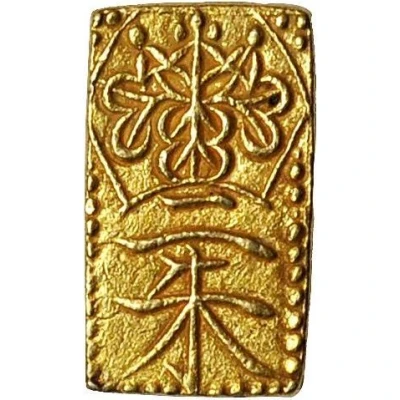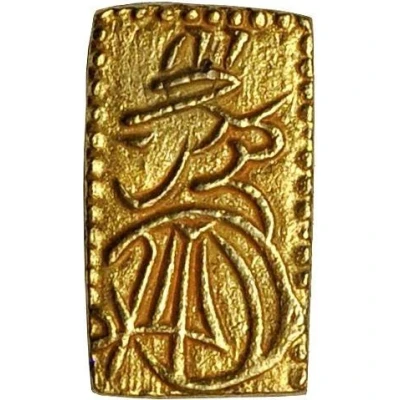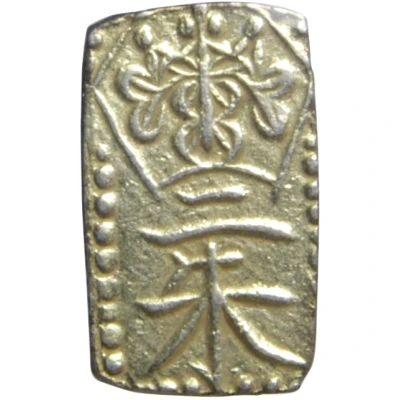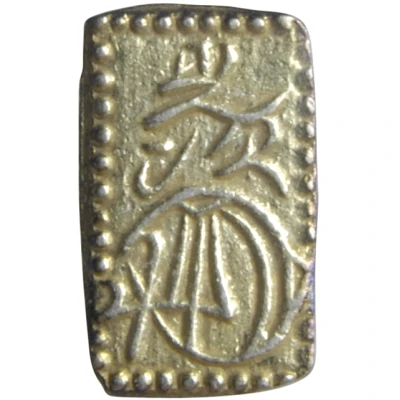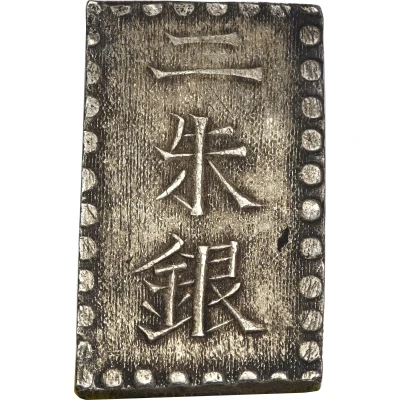
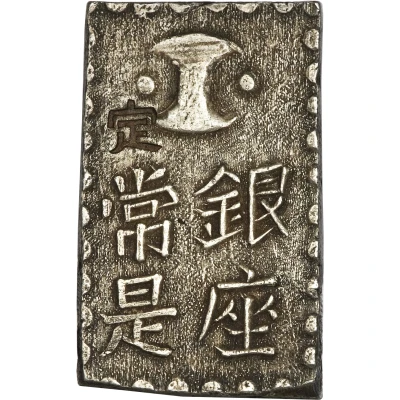

© Heritage Auctions
2 Shu "Ansei Nishugin" ND
1859 year| Silver (.845) | 13.62 g | - |
| Issuer | Japan |
|---|---|
| Emperor | Kōmei (1846-1867) |
| Type | Standard circulation coin |
| Year | 1859 |
| Value | 2 Shu (⅛) |
| Currency | Ryō (1595-1874) |
| Composition | Silver (.845) |
| Weight | 13.62 g |
| Size | 27 × 16 mm |
| Shape | Rectangular (irregular) |
| Technique | Hammered, Countermarked |
| Demonetized | Yes |
| Updated | 2024-10-06 |
| Numista | N#27001 |
|---|---|
| Rarity index | 91% |
Reverse
A Fundo (symbol for official weight with an incuse stamp 定 (= Jo) to the left of it over 4 kanji surrounded by pearl border.
Script: Chinese (traditional, regular script)
Lettering:
定
常銀
是座
Translation:
Guaranteed
Silver Mint
Joze
Comment
Japan signed the Ansei Five-Power Treaties with the United States, Great Britain, Russia, the Netherlands, and France in 1858. These included clauses that Japan should open its ports to foreign trade the next year. On the 2nd of June 1859, the day before the opening of the ports, the Shogunate issued this 2 Shu silver coin which was devalued in comparison with the gold koban to less than a third of its former value. The parity between gold and silver coins was set to 1:17 (previously it stood by 1:5 compared to 1:15 abroad, this caused a massive outflow of gold coins which were exchanged for Mexican silver dollars giving foreign merchants enormous profit). Had the new coins been put into circulation, the outflow of gold koban abroad would have been prevented. However, diplomats from the US and other countries strongly opposed these new coins, while merchants rejected them. Therefore, the Japanese authorities discontinued the minting of Ansei Nishu-gin after a very short time and the coins are very rare today.Interesting fact
The 2 Shu "Ansei Nishugin" coin from Japan, minted in 1859, features a unique design that reflects the country's transition from a feudal society to a modern, industrialized nation. The coin's obverse side features a stylized chrysanthemum, which was a symbol of the Japanese emperor, while the reverse side features a pair of dragons and a phoenix, representing the harmony between yin and yang. This design was a departure from the traditional Buddhist motifs found on earlier Japanese coins, and was intended to promote the idea of a strong and prosperous Japan.
Price
| Date | Mintage | VG | F | VF | XF | AU | UNC |
|---|---|---|---|---|---|---|---|
| ND (1859) | 706400 | - | - | - | - | - | - |
Values in the table are based on evaluations by sales realized on Internet platforms. They serve as an indication only for 2 Shu "Ansei Nishugin" ND (1859) coin.
